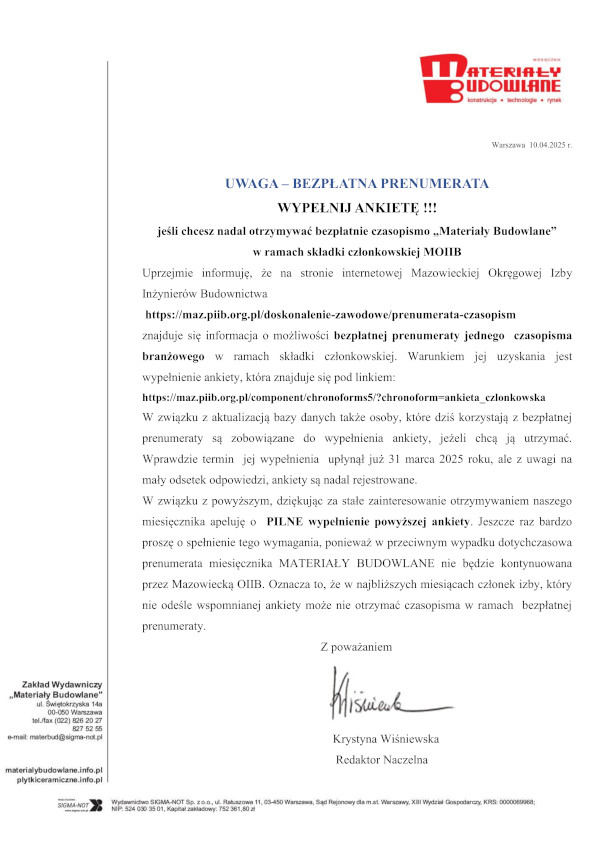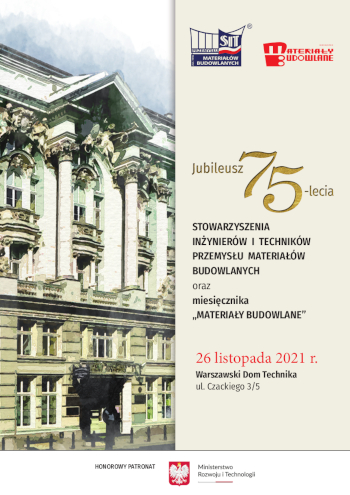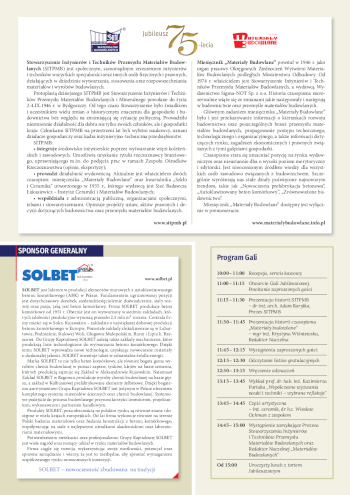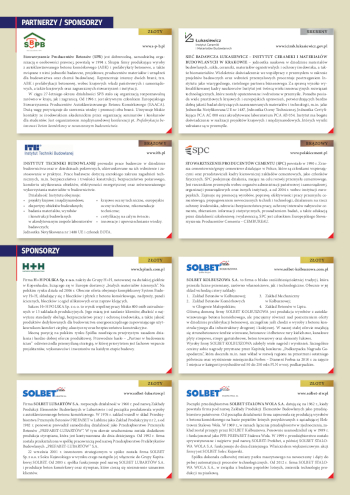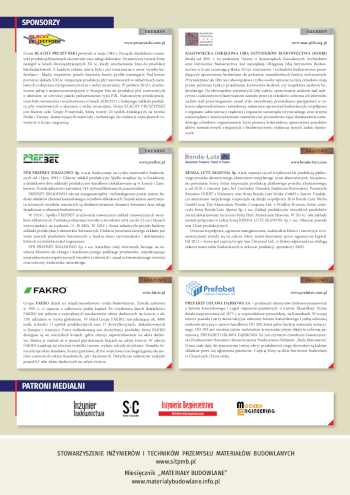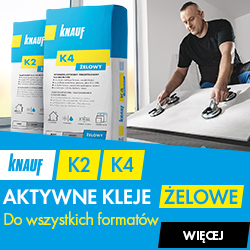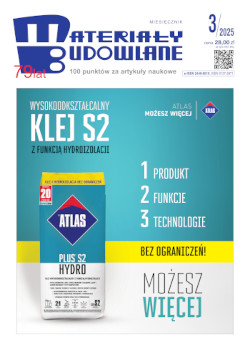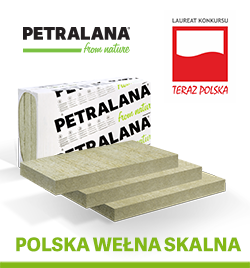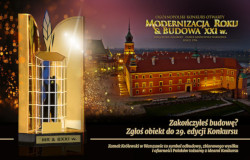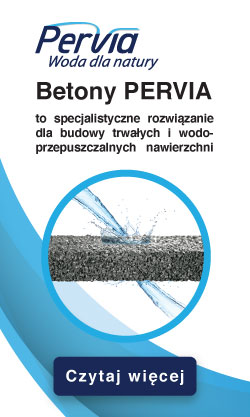mgr inż. Katarzyna Zdanowicz, Leibniz Universität Hannover, Institut für Massivbau, Niemcy
ORCID: 0000-0003-3847-3631
Prof. Dr.-Ing. Steffen Marx, Leibniz Universität Hannover, Institut für Massivbau, Niemcy
Adres do korespondencji: Ten adres pocztowy jest chroniony przed spamowaniem. Aby go zobaczyć, konieczne jest włączenie w przeglądarce obsługi JavaScript.
DOI: 10.15199/33.2019.06.09
Artykuł przeglądowy
W artykule zaprezentowano siatki tekstylne z włókien węglowych i szklanych jako alternatywne zbrojenie elementów betonowych. Opisano ich strukturę i właściwości oraz charakterystykę jako produktu znajdującego się pomiędzy krótkimi włóknami do fibrobetonu a typowymi prętami zbrojeniowymi z materiałów kompozytowych FRP (Fibre Reinforced Polymers). Przedstawiono obszary zastosowania betonu ze zbrojeniem z siatek tekstylnych do: konstrukcji kładek pieszo rowerowych i mostów; produkcji elementów fasadowych i wielowarstwowych paneli ściennych typu „sandwich” oraz do konstrukcji kopuł i elementów przekryć o skomplikowanej geometrii i zakrzywionej powierzchni. Opisano kierunki rozwoju betonu ze zbrojeniem tekstylnym, prowadzone badania i nowe obszary zastosowania. Wymieniono również dostępne w literaturze modele inżynierskie oraz wytyczne do wymiarowania konstrukcji ze zbrojeniem tekstylnym.
Słowa kluczowe: zbrojenie tekstylne; siatki z włókien węglowych; beton ze zbrojeniem tekstylnym; zbrojenie niemetaliczne.
Glass and carbon textile reinforcement for concrete structures
Abstract. This reviewarticle presents textile gridsmade of carbon and glass fibres as an alternative reinforcement for concrete elements. The structure and properties of textile reinforcement and the characteristics of textile reinforced concrete as a material located between fiber reinforced concrete and concrete with reinforcement barsmade of FRP (Fibre Reinforced Polymers) are described. The article presents main areas of application of concrete with textile reinforcement: for the construction of footbridges and bridges, for the production of façade elements and multilayer sandwich wall panels, and as reinforcement for the construction of domes and elements with complex geometry and curved surfaces. The directions of development of textile reinforced concrete, current research and possible further areas of application are briefly described. It also lists models available in the literature for the design of structures with textile reinforcement.
Keywords: textile reinforcement; carbon textiles; textile reinforced concrete; non-metallic reinforcement.
Literatura
[1] A[1]ACI. n.d. „ACI 549. ZR:Guide fortheDesign ofThinReinforcedCementitious Composites.” American Concrete Institute.Wprzygotowaniu.
[2] Beton.org. 2019. „Hauchdünne Schalen Aus Textilbeton:MessnerMountainMuseumCorones Auf Dem Kronplatz.” Dostęp 08.03.2019. https://www.beton.org/inspiration/architektur/objekt-details/messner-mountain-museum-coronesauf-dem-kronplatz/.
[3] Billington David, Maria Moreyra Garlock. 2010. „Structural Art and theExampleof Félix Candela.” ASCE Journal ofStructural Engineering. DOI:10.1061/(asce)st.1943-541x.0000144.
[4] Deutsches Institut für Bautechnik. 2017. „Allgemeine Bauaufsichtliche Zulassung Nr. Z-71.3-39.”
[5] EhligDaniel,Frank Schladitz,Michael Frenzel, ManfredCurbach. 2012. „Textilbeton:Ausgeführte Projekte ImÜberblick.” Beton- und Stahlbetonbau 107 (11): 777 – 85. DOI:10.1002/best.201200034.
[6] Goldfeld Yiska,Oded Rabinovitch, Barak Fishbain, Till Quadflieg, Thomas Gries. 2015. „Sensory Carbon Fiber Based Textile- ReinforcedConcretefor Smart Structures.” Journal of Intelligent Material Systems and Structures. DOI:10.1177/1045389X15571385.
[7] Górski Marcin, Rafał Krzywoń, Szymon Dawczyński, Leszek Szojda. 2016. „Laminat z włókna węglowego jakos ensortekstylny – badania zmian oporności.” Materiały Budowlane 1 (8): 146–47. DOI: 10.15199/33.2016.08.44.
[8] Hack Norman, Willi Lauer, Fabio Gramazio, MatthiasKohler. 2015. „MeshMould: Robotically Fabricated Metal Meshesas Concrete Formwork and Reinforcement.” Ferro-11: Proceedingsofthe 11th International Symposium on Ferrocement, 1–13. Aachen, Germany. RILEM.
[9] Hegger Josef, Claus Goralski, Christian Kulas. 2011. „Schlanke Fußgängerbrücke Aus Textilbeton.” Beton- und Stahlbetonbau 106 (2): 64–71. DOI: 10.1002/best. 201000081.
[10] Hegger Josef, Christian Kulas,Michael Raupach, Till Büttner. 2011. „Tragverhalten Und Dauerhaftigkeit Einer Schlanken Textilbetonbrücke.” Beton- und Stahlbetonbau 106 (2): 72–80. DOI: 10.1002/best. 201000082.
[11] Hegger Josef, Hartwig Schneider, Christian Kulas, Christian Schätzke. 2009. „Dünnwandige, Großformatige FassadenelementeAus Textilbeton.” 4th Colloquium on Textile Reinforced Structures, 541–52.
[12] Helbig Thorsten, Sergej Rempel, Kay Unterer, Christian Kulas, Josef Hegger. 2016. „Fuß- Und Radwegbrücke AusCarbonbeton in Albstadt-Ebingen.” Beton- und Stahlbetonbau 111 (10): 676–85. DOI:10.1002/best.201600058.
[13] Käseberg Stefan, M. Schaller, Klaus Holschemacher. 2012. „CFRP Systems with Embedded FBG forStructural Monitoring and Retrofitting.” 6th European Workshop on StructuralHealth Monitoring.
[14] Kotala Bernard, Marek Węglorz. 2015. „Laboratory testsofthin-walled, textile reinforced concrete plates and rc-columnsstrengthenedwith textile fabrics”. ArchitectureCivil Engineering Environment 2015 (2): 53 – 60.
[15] KoutasLampros, Zoi Tetta, Dionysios Bournas, Thanasis Triantafillou. 2019. „StrengtheningofConcrete Structures with Textile Reinforced- Mortars: State-of-the-Art Review.” Journal of Composites for Construction 23 (1): 1–20. DOI: 10.1061/(ASCE) CC.1943-5614.0000882.
[16] Kromoser Benjamin, Philipp Preinstorfer, Johann Kollegger. 2018. „Building Lightweight Structures with Carbon-Fiber-Reinforced Polymer- Reinforced Ultra-High-Performance Concrete: Research Approach, Construction Mterials, and Conceptual Design ofThree Building Components.” Structural Concrete, October 2017: 1–15. DOI: 10.1002/suco. 201700225.
[17] Kulas Christian. 2013. Zum Tragverhalten Getränkter Textiler Bewehrungselemente Für Betonbauteile.Aachen: Lehrstuhl und Institut für Massivbau.
[18] Michler Harald. 2013. „SegmentbrückeAus Textilbewehrtem Beton – Rottachsteg Kempten Im Allgäu.” Beton- und Stahlbetonbau 108 (5): 325–34. DOI:10.1002/best.201300023.
[19] MobasherBarzin. 2011. „Development of Design ProceduresforFlexuralApplicationsof Textile Composite Systems Based on Tension Stiffening Models.” 6th Colloquium on Textile Reinforced Structures.
[20] Molter Matthias. 2005. Zum Tragverhalten von Textilbewehrtem Beton. Aachen: Lehrstuhl und Institut für Massivbau.
[21] PeledAlva, BarzinMobasher,Arnon Bentur. 2017. Textile Reinforced Concrete. CRC Press, Taylor & Francis Group.
[22] Reinhardt Hans, Markus Krüger, Christian Große. 2003. „Concrete Prestressed with Textile Fabric.” Journal of Advanced Concrete Technology 1 (3): 231–39. DOI: 10.3151/jact.1.231.
[23] Rempel Sergiej, NorbertWill, Josef Hegger, Patrick Beul. 2015. „Filigrane BauwerkeAus Textilbeton: Leistungsfähigkeit Und Anwendungspotenzial Des Innovativen Verbundwerkstoffs.” Beton- und Stahlbetonbau 110 (S1): 83–93. DOI: 10.1002/best.201400111.
[24] RILEMTC 232-TDT. 2016. „Recommendation of RILEM TC 232-TDT: Test Methods and Design of Textile Reinforced Concrete: Uniaxial- Tensile Test.” Materials and Structures 49 (12): 4923–27. DOI: 10.1617/s11527-016-0839-z.
[25] Scholzen Alexander, Rostislav Chudoba, Josef Hegger. 2015. „Thin-Walled Shell Structures Made of Textile-Reinforced Concrete: Part I: Structural Design and Construction.” Structural Concrete 16 (1): 106 – 14. DOI: 10.1002/suco.201300071.
[26] ScholzenAlexander, Rostislav Chudoba, Josef Hegger, Norbert Will. 2016. „Leichte Dachschalen Aus Carbonbeton: Fertigteilproduktion, Experimentelle Untersuchungen Und Anwendungspotenzial.” Beton- und Stahlbetonbau 111 (10): 663–75. DOI: 10.1002/best. 201600030.
[27] Solidian GmbH. 2019b. „Verkleidung Der Brückenpylone in 320 m Höhe.” Dostęp 08.03.2019. https://www. solidian. com/referenzen/ details/bosporus-bruecke/.
[28] Triantafillou Thanasis. 2016. Textile Fibre Composites in Civil Engineering. Woodhead Publishing.
[29] Verbruggen S., Remy O., Wastiels J., Tysmans T. 2013. „Stay-in-Place Formworkof TRC Designedas Shear Reinforcement forConcreteBeams.” Advances in Materials Science and Engineerin: 1–9. DOI: 10.1155/2013/648943.
[30] Walther Tobias, Frank Schladitz, Manfred Curbach. 2014. „Textilbetonherstellung Im Gießverfahren Mit Hilfe von Abstandhaltern.” Beton- und Stahlbetonbau 109 (3): 216–22. DOI:10.1002/best.201300080.
[31] Williams Portal Natalie. 2015. Usability of Textile Reinforced Concrete: Structural Performance, Durability and Sustainability. Gothenburg, Sweden: Division of Structural Engineering & Concrete Structures.
[32] Zdanowicz Katarzyna, Steffen Marx. 2018. „Thin Concrete Panels Prestressed with Carbon Textile Reinforcement: FlexuralTesting.” 5th International Fib Congress „Smarter – Better – Stronger”. Melbourne, Australia.
[33] Zdanowicz Katarzyna, Boso Schmidt, Hubert Naraniecki, Steffen Marx. 2019. „Bond Behaviourof Chemically Prestressed Textile Reinforced Concrete.” IABSE Symposium 2019. Guimaraes, Portugal.
Przyjęto do druku: 15.05.2019 r.
Materiały Budowlane 6/2019, strona 64-69 (spis treści >>)


